�
Programming: Principles and Practice Using C++
Second Edition
Bjarne Stroustrup
Upper Saddle River, NJ • Boston • Indianapolis • San Francisco
New York • Toronto • Montreal • London • Munich • Paris • Madrid
Capetown • Sydney • Tokyo • Singapore • Mexico City
Many of the designations used by manufacturers and sellers to distinguish their products are claimed as trademarks. Where
those designations appear in this book, and the publisher was aware of a trademark claim, the designations have been
printed with initial capital letters or in all capitals.
A complete list of photo sources and credits appears on pages 1273–1274.
The author and publisher have taken care in the preparation of this book, but make no expressed or implied warranty of any
kind and assume no responsibility for errors or omissions. No liability is assumed for incidental or consequential damages in
connection with or arising out of the use of the information or programs contained herein.
For information about buying this title in bulk quantities, or for special sales opportunities (which may include electronic
versions; custom cover designs; and content particular to your business, training goals, marketing focus, or branding
interests), please contact our corporate sales department at corpsales@pearsoned.com or (800) 382-3419.
For government sales inquiries, please contact governmentsales@pearsoned.com.
For questions about sales outside the United States, please contact international@pearsoned.com.
Visit us on the Web: informit.com/aw
Library of Congress Cataloging-in-Publication Data
Stroustrup, Bjarne, author.
Programming : principles and practice using C++ / Bjarne Stroustrup. — Second edition.
pages cm
Includes bibliographical references and index.
ISBN 978-0-321-99278-9 (pbk. : alk. paper)
1. C++ (Computer program language) I. Title.
QA76.73.C153S82 2014
005.13'3—dc23
2014004197
Copyright © 2014 Pearson Education, Inc.
All rights reserved. Printed in the United States of America. This publication is protected by copyright, and permission must
be obtained from the publisher prior to any prohibited reproduction, storage in a retrieval system, or transmission in any form
or by any means, electronic, mechanical, photocopying, recording, or likewise. To obtain permission to use material from
this work, please submit a written request to Pearson Education, Inc., Permissions Department, One Lake Street, Upper
Saddle River, New Jersey 07458, or you may fax your request to (201) 236-3290.
ISBN-13: 978-0-321-99278-9
ISBN-10: 0-321-99278-4
Text printed in the United States on recycled paper at RR Donnelley in Crawfordsville, Indiana.
First printing, May 2014
�
Contents
Preface
Chapter 0 Notes to the Reader
0.1 The structure of this book
0.1.1 General approach
0.1.2 Drills, exercises, etc.
0.1.3 What comes after this book?
0.2 A philosophy of teaching and learning
0.2.1 The order of topics
0.2.2 Programming and programming language
0.2.3 Portability
0.3 Programming and computer science
0.4 Creativity and problem solving
0.5 Request for feedback
0.6 References
0.7 Biographies
Bjarne Stroustrup
Lawrence “Pete” Petersen
Chapter 1 Computers, People, and Programming
1.1 Introduction
1.2 Software
1.3 People
1.4 Computer science
1.5 Computers are everywhere
1.5.1 Screens and no screens
1.5.2 Shipping
1.5.3 Telecommunications
1.5.4 Medicine
1.5.5 Information
1.5.6 A vertical view
1.5.7 So what?
1.6 Ideals for programmers
Part I The Basics
Chapter 2 Hello, World!
2.1 Programs
2.2 The classic first program
2.3 Compilation
2.4 Linking
2.5 Programming environments
�
Chapter 3 Objects, Types, and Values
3.1 Input
3.2 Variables
3.3 Input and type
3.4 Operations and operators
3.5 Assignment and initialization
3.5.1 An example: detect repeated words
3.6 Composite assignment operators
3.6.1 An example: find repeated words
3.7 Names
3.8 Types and objects
3.9 Type safety
3.9.1 Safe conversions
3.9.2 Unsafe conversions
Chapter 4 Computation
4.1 Computation
4.2 Objectives and tools
4.3 Expressions
4.3.1 Constant expressions
4.3.2 Operators
4.3.3 Conversions
4.4 Statements
4.4.1 Selection
4.4.2 Iteration
4.5 Functions
4.5.1 Why bother with functions?
4.5.2 Function declarations
4.6 vector
4.6.1 Traversing a vector
4.6.2 Growing a vector
4.6.3 A numeric example
4.6.4 A text example
4.7 Language features
Chapter 5 Errors
5.1 Introduction
5.2 Sources of errors
5.3 Compile-time errors
5.3.1 Syntax errors
5.3.2 Type errors
5.3.3 Non-errors
5.4 Link-time errors
�
5.5 Run-time errors
5.5.1 The caller deals with errors
5.5.2 The callee deals with errors
5.5.3 Error reporting
5.6 Exceptions
5.6.1 Bad arguments
5.6.2 Range errors
5.6.3 Bad input
5.6.4 Narrowing errors
5.7 Logic errors
5.8 Estimation
5.9 Debugging
5.9.1 Practical debug advice
5.10 Pre- and post-conditions
5.10.1 Post-conditions
5.11 Testing
Chapter 6 Writing a Program
6.1 A problem
6.2 Thinking about the problem
6.2.1 Stages of development
6.2.2 Strategy
6.3 Back to the calculator!
6.3.1 First attempt
6.3.2 Tokens
6.3.3 Implementing tokens
6.3.4 Using tokens
6.3.5 Back to the drawing board
6.4 Grammars
6.4.1 A detour: English grammar
6.4.2 Writing a grammar
6.5 Turning a grammar into code
6.5.1 Implementing grammar rules
6.5.2 Expressions
6.5.3 Terms
6.5.4 Primary expressions
6.6 Trying the first version
6.7 Trying the second version
6.8 Token streams
6.8.1 Implementing Token_stream
6.8.2 Reading tokens
6.8.3 Reading numbers
6.9 Program structure
�
Chapter 7 Completing a Program
7.1 Introduction
7.2 Input and output
7.3 Error handling
7.4 Negative numbers
7.5 Remainder: %
7.6 Cleaning up the code
7.6.1 Symbolic constants
7.6.2 Use of functions
7.6.3 Code layout
7.6.4 Commenting
7.7 Recovering from errors
7.8 Variables
7.8.1 Variables and definitions
7.8.2 Introducing names
7.8.3 Predefined names
7.8.4 Are we there yet?
Chapter 8 Technicalities: Functions, etc.
8.1 Technicalities
8.2 Declarations and definitions
8.2.1 Kinds of declarations
8.2.2 Variable and constant declarations
8.2.3 Default initialization
8.3 Header files
8.4 Scope
8.5 Function call and return
8.5.1 Declaring arguments and return type
8.5.2 Returning a value
8.5.3 Pass-by-value
8.5.4 Pass-by-const-reference
8.5.5 Pass-by-reference
8.5.6 Pass-by-value vs. pass-by-reference
8.5.7 Argument checking and conversion
8.5.8 Function call implementation
8.5.9 constexpr functions
8.6 Order of evaluation
8.6.1 Expression evaluation
8.6.2 Global initialization
8.7 Namespaces
8.7.1 using declarations and using directives
Chapter 9 Technicalities: Classes, etc.
�
9.1 User-defined types
9.2 Classes and members
9.3 Interface and implementation
9.4 Evolving a class
9.4.1 struct and functions
9.4.2 Member functions and constructors
9.4.3 Keep details private
9.4.4 Defining member functions
9.4.5 Referring to the current object
9.4.6 Reporting errors
9.5 Enumerations
9.5.1 “Plain” enumerations
9.6 Operator overloading
9.7 Class interfaces
9.7.1 Argument types
9.7.2 Copying
9.7.3 Default constructors
9.7.4 const member functions
9.7.5 Members and “helper functions”
9.8 The Date class
Part II Input and Output
Chapter 10 Input and Output Streams
10.1 Input and output
10.2 The I/O stream model
10.3 Files
10.4 Opening a file
10.5 Reading and writing a file
10.6 I/O error handling
10.7 Reading a single value
10.7.1 Breaking the problem into manageable parts
10.7.2 Separating dialog from function
10.8 User-defined output operators
10.9 User-defined input operators
10.10 A standard input loop
10.11 Reading a structured file
10.11.1 In-memory representation
10.11.2 Reading structured values
10.11.3 Changing representations
Chapter 11 Customizing Input and Output
11.1 Regularity and irregularity
�
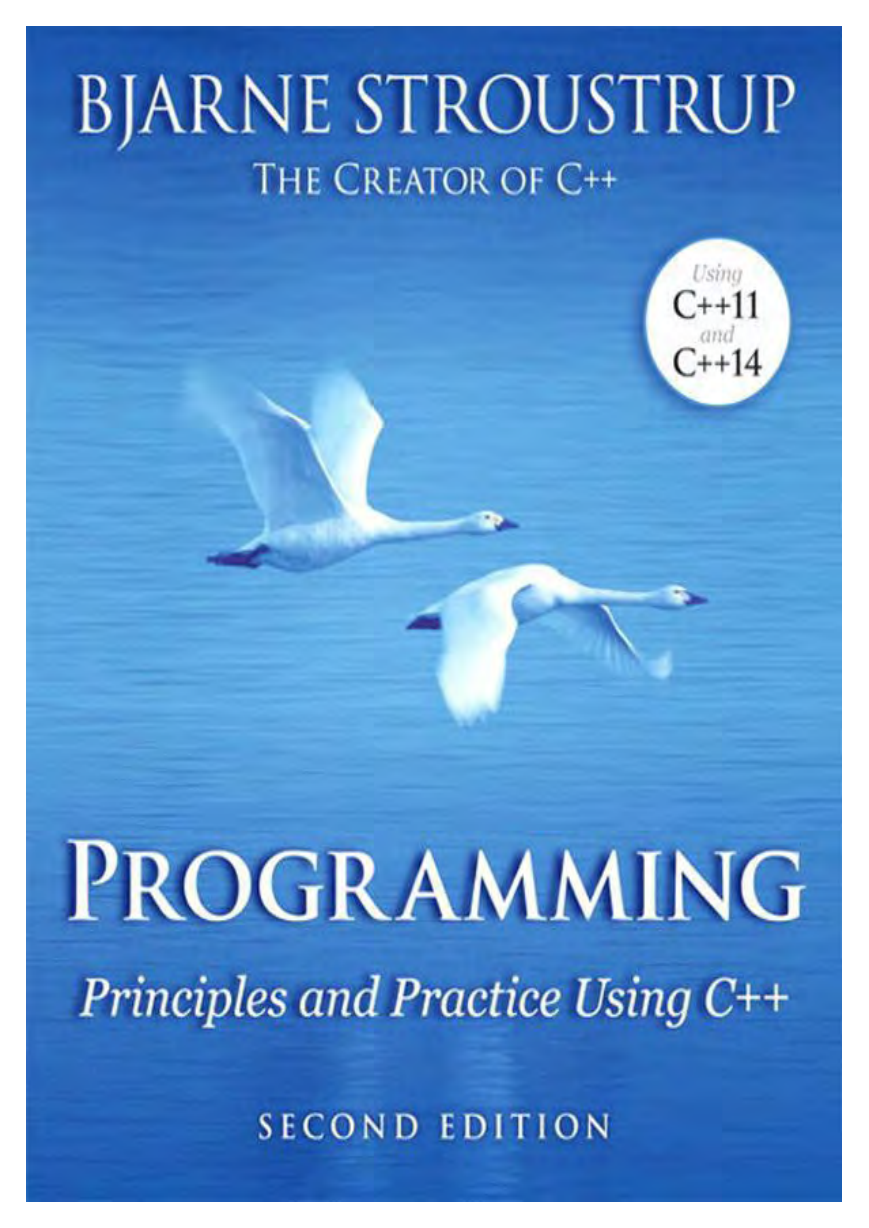
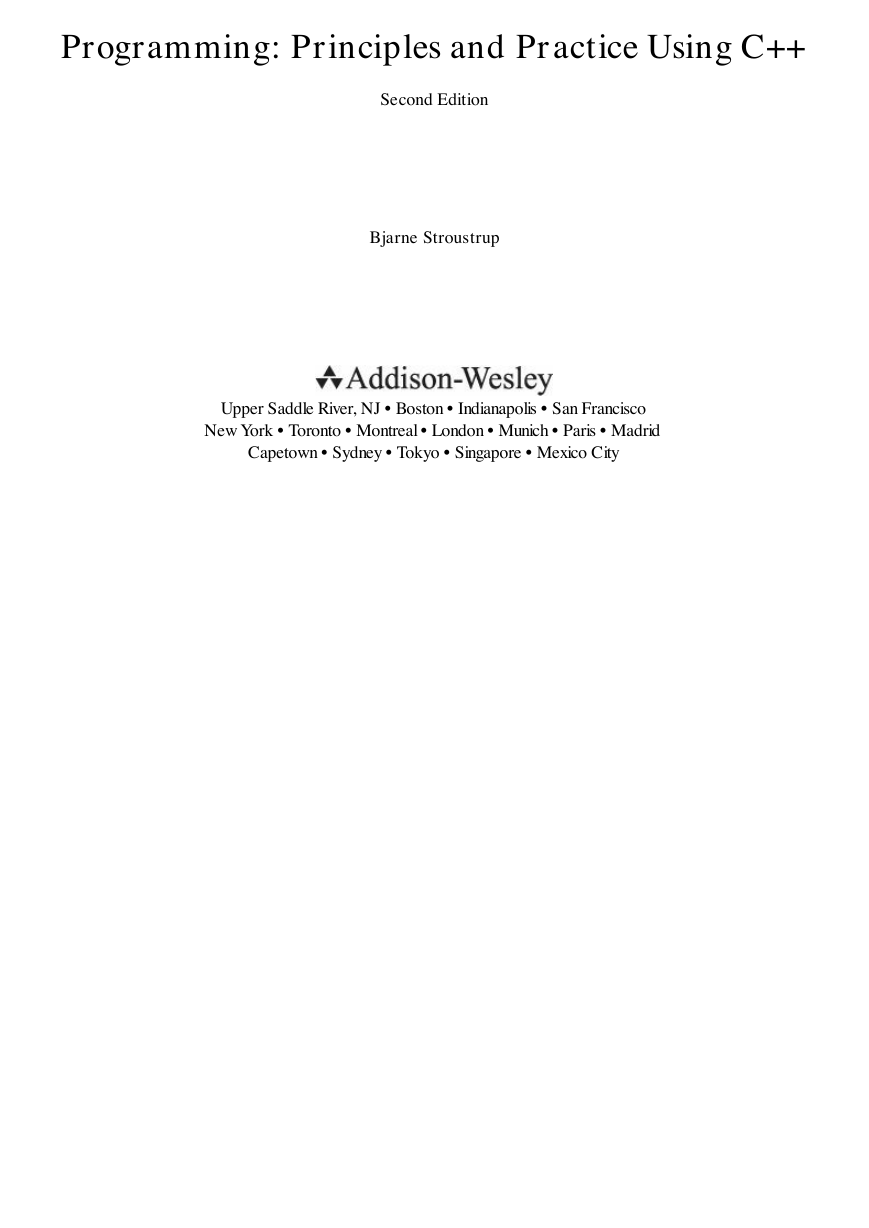
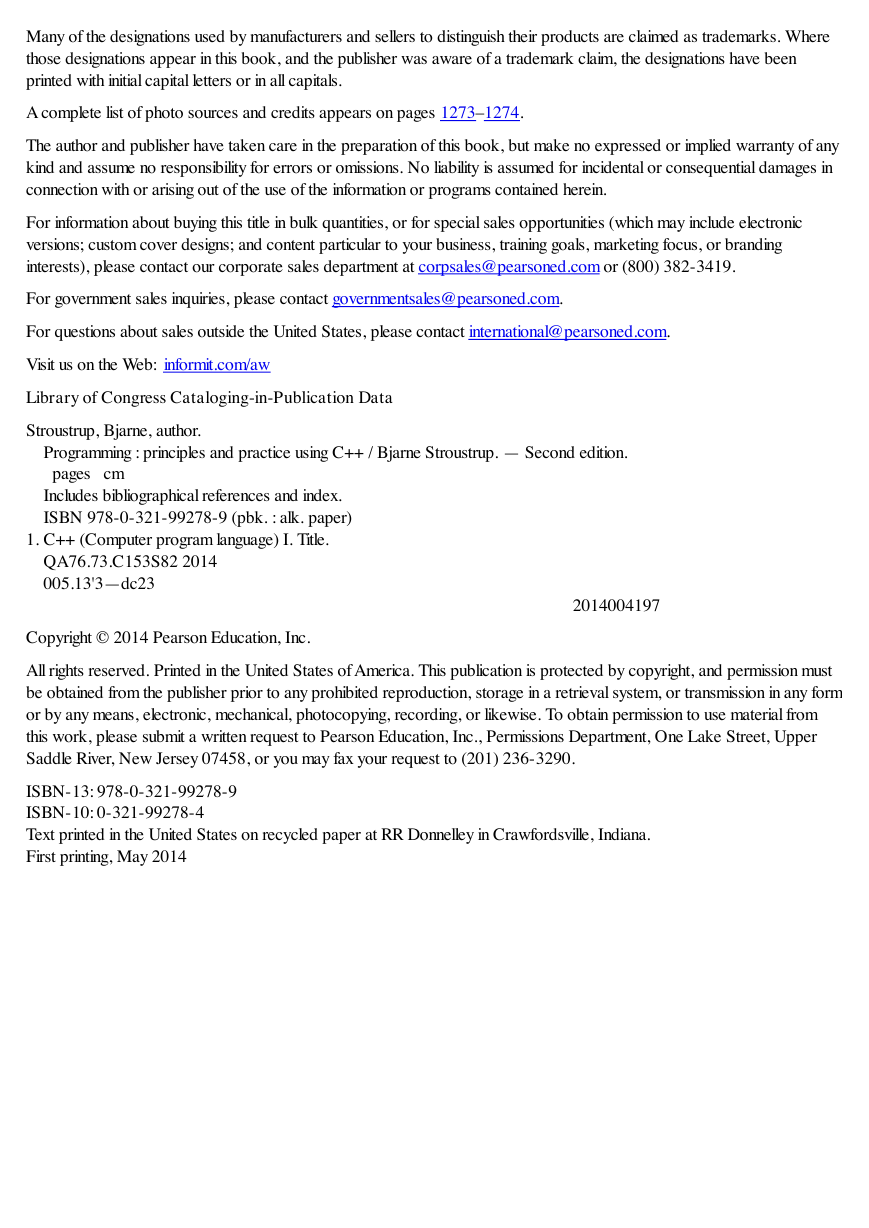


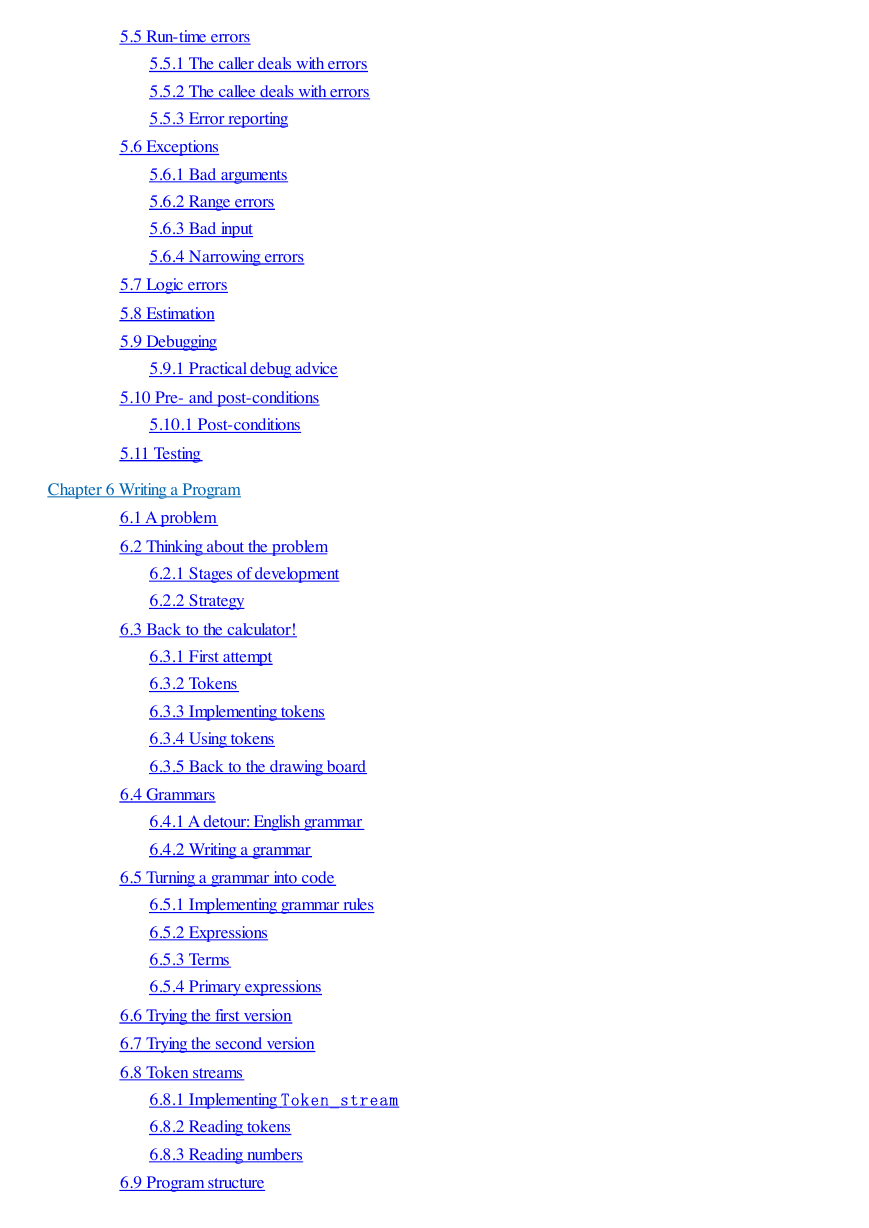
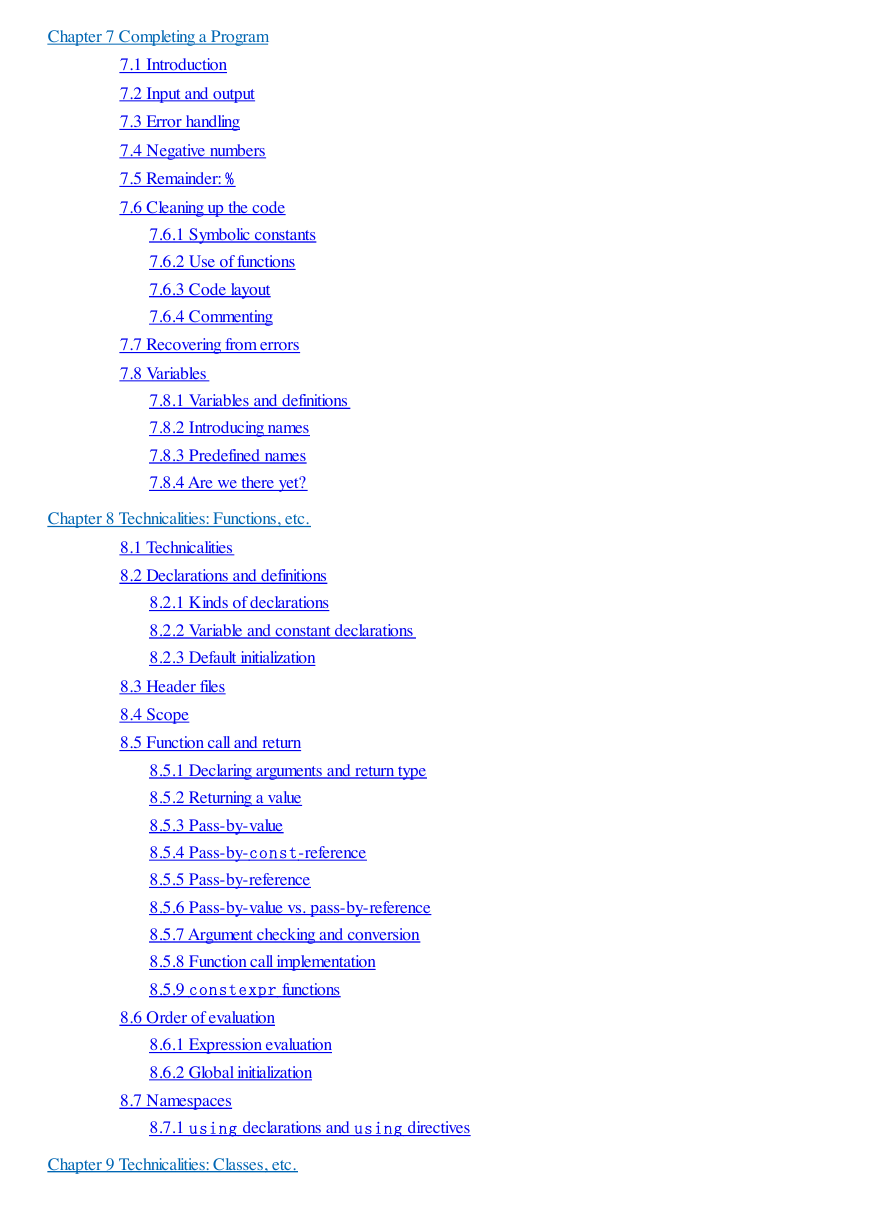
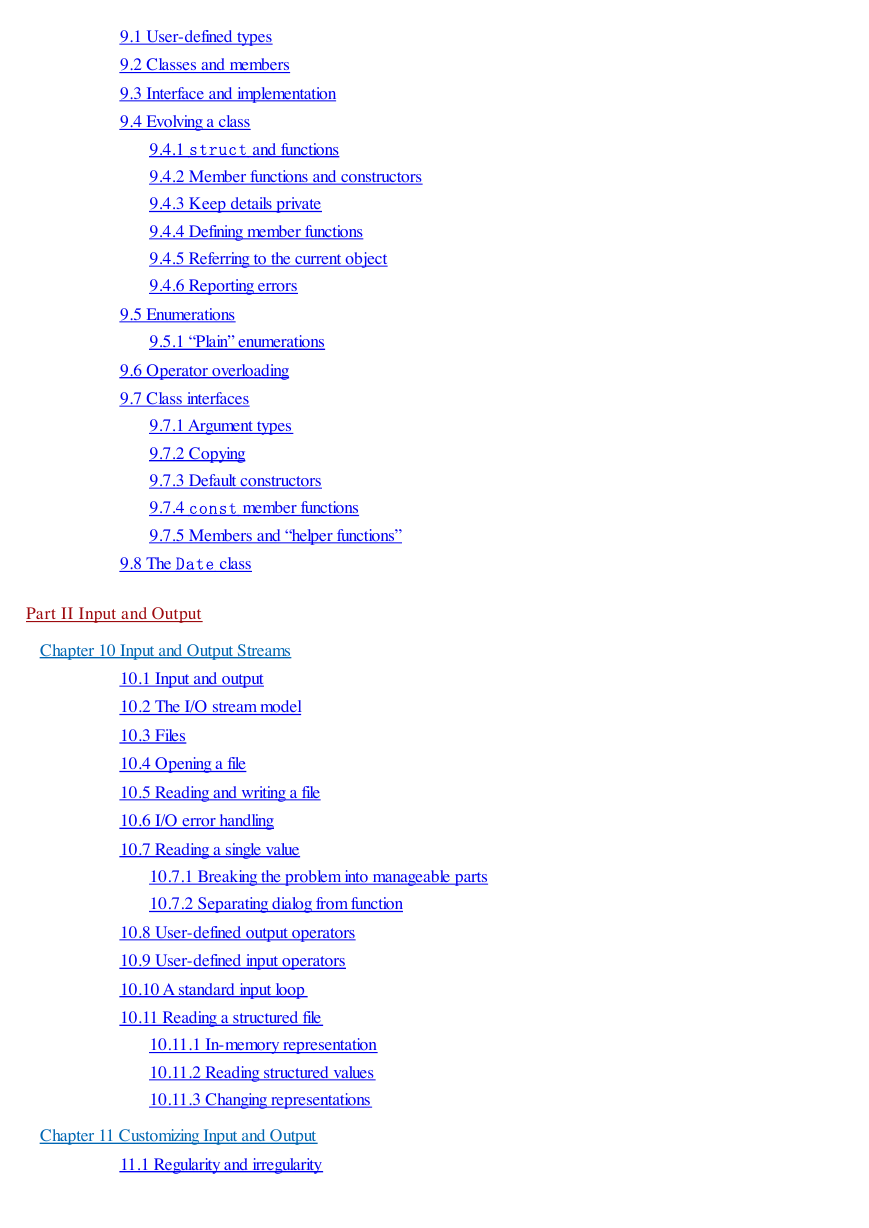








 2023年江西萍乡中考道德与法治真题及答案.doc
2023年江西萍乡中考道德与法治真题及答案.doc 2012年重庆南川中考生物真题及答案.doc
2012年重庆南川中考生物真题及答案.doc 2013年江西师范大学地理学综合及文艺理论基础考研真题.doc
2013年江西师范大学地理学综合及文艺理论基础考研真题.doc 2020年四川甘孜小升初语文真题及答案I卷.doc
2020年四川甘孜小升初语文真题及答案I卷.doc 2020年注册岩土工程师专业基础考试真题及答案.doc
2020年注册岩土工程师专业基础考试真题及答案.doc 2023-2024学年福建省厦门市九年级上学期数学月考试题及答案.doc
2023-2024学年福建省厦门市九年级上学期数学月考试题及答案.doc 2021-2022学年辽宁省沈阳市大东区九年级上学期语文期末试题及答案.doc
2021-2022学年辽宁省沈阳市大东区九年级上学期语文期末试题及答案.doc 2022-2023学年北京东城区初三第一学期物理期末试卷及答案.doc
2022-2023学年北京东城区初三第一学期物理期末试卷及答案.doc 2018上半年江西教师资格初中地理学科知识与教学能力真题及答案.doc
2018上半年江西教师资格初中地理学科知识与教学能力真题及答案.doc 2012年河北国家公务员申论考试真题及答案-省级.doc
2012年河北国家公务员申论考试真题及答案-省级.doc 2020-2021学年江苏省扬州市江都区邵樊片九年级上学期数学第一次质量检测试题及答案.doc
2020-2021学年江苏省扬州市江都区邵樊片九年级上学期数学第一次质量检测试题及答案.doc 2022下半年黑龙江教师资格证中学综合素质真题及答案.doc
2022下半年黑龙江教师资格证中学综合素质真题及答案.doc